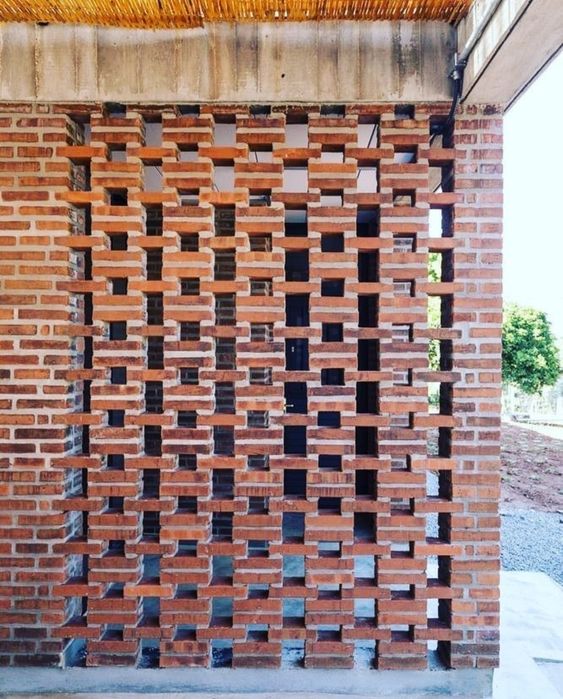#14496. Perforated Brick Facade: The Functional Aesthetics of Ventilated Walls

Before us is a striking example of a perforated brick wall, which represents an interesting architectural solution from both functional and aesthetic perspectives. This masonry is made of terracotta bricks, laid in a special rhythmic order, creating a lace-like structure with multiple openings.
The distinctive feature of this façade element lies in its transparency and play of light. The bricks are arranged in such a way that they form a regular pattern of rectangular openings, allowing air and light to freely penetrate through the structure. The upper part of the wall is crowned with a concrete lintel, and above it, a fragment of a straw or reed ceiling is visible, adding warmth and connection to natural materials to the composition.
Such perforated masonry, also known as a "brick screen" or "lattice wall," has deep roots in architectural traditions of various cultures, from Islamic architecture to modernist experiments of the mid-20th century. Its functionality is evident: it provides natural ventilation, partial shading, and visual privacy, while maintaining a connection with the surrounding environment.
When designing the facade of your own home, such a solution can be adapted for various climatic conditions and architectural styles. This technique is especially valuable in warm climates where air circulation is important. In a contemporary interpretation, such screens can become not only a functional element but also an expressive artistic accent that will give individuality to your building.